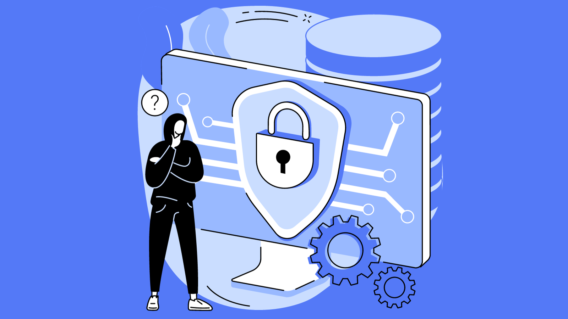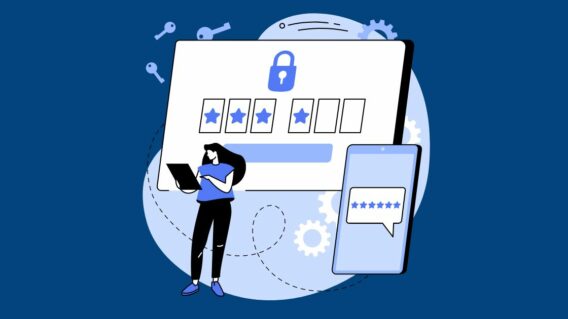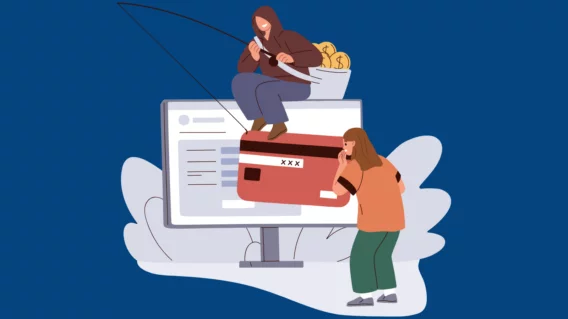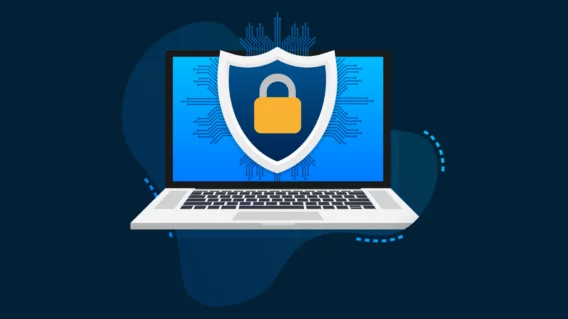The Complete Guide to Advanced Persistent Threats

Cyber threats come in many forms and while most IT professionals are familiar with common cyber threats like viruses and phishing attacks, there’s another notable danger organizations should be aware of: the Advanced Persistent Threat (APT).
Understanding the mechanics and implications of APTs is essential to safeguard organizations and individuals. In this comprehensive guide, we explore the world of APTs, explaining their nature, mechanisms, and the best strategies to counteract them.
What is an APT?
APT stands for “Advanced Persistent Threat.” This type of threat is distinct from other cyber threats due to its long-term nature, complexity, and the specific objectives behind it. An APT is typically orchestrated by a group of skilled cybercriminals with substantial resources at their disposal. Their primary aim isn’t always immediate financial gain; rather, they often seek strategic, political, or espionage-related objectives.
The “Advanced” in APT signifies the sophisticated techniques and tactics employed. These adversaries utilize a combination of malware, zero-day vulnerabilities, and social engineering to achieve their goals.
The term “Persistent” underscores the prolonged nature of the attack. Unlike opportunistic attacks, where cybercriminals might move on if they don’t find an easy way in, APT actors are committed to their target and will persistently try different avenues until they infiltrate the desired system.
Lastly, “Threat” emphasizes the potential harm an organization faces from these skilled and motivated hackers.
How Does an Advanced Persistent Threat Attack Work?
Understanding the intricacies of APT attacks requires a look into their typical progression. While each APT can be unique in its specifics, a majority can be broken down into three primary stages.
Infiltration
This is the initial stage where the adversaries try to gain a foothold within the targeted organization. The methods can vary, but common ones include:
- Web assets: Attackers might exploit vulnerabilities in web applications or websites.
- Network resources: Through weak points in network security, perhaps by leveraging unpatched software vulnerabilities.
- Authorized human users: By employing spear phishing techniques or other forms of social engineering, adversaries can deceive legitimate users into granting them access.
Distraction is also a tactic. A concurrent DDoS attack might be deployed to divert the attention of security personnel. Once inside, attackers typically install a backdoor, allowing them continuous access to the system, often cloaked as legitimate software to avoid detection.
Escalation/Expansion
With an initial foothold, the next step is to expand their access. Attackers will:
- Move laterally within the network, accessing more systems and accounts.
- Target individuals with higher privileges to gain access to sensitive data and critical system controls.
- Gather crucial data like product strategies, financial details, and other proprietary information. Depending on the endgame, this data can be used in multiple malicious ways, from selling to rivals to outright sabotage.
Extraction
Throughout the attack, stolen data is accumulated within the breached network. The extraction phase is when attackers transfer this data out, ideally without detection. To divert attention, they might deploy “white noise” tactics or even another DDoS attack. The goal is to confuse and overwhelm security teams, making the data extraction process smoother.
Characteristics of Advanced Persistent Threats
Recognizing an ongoing APT attack can be challenging, given their covert nature. However, there are distinct characteristics that differentiate APTs from other cyber threats:
- Actors: APTs are often executed by actors with distinct missions. Many times, these actors are sponsored by nation-states or large corporate entities. Notorious examples are Deep Panda, OilRig, and APT28.
- Objectives: APTs aim to either weaken target capabilities or gather intelligence over prolonged periods. Their motives can be either strategic or political, ranging from industrial espionage to geopolitical power plays.
- Timeliness: Persistence is the hallmark of APTs. Attackers frequently access the compromised system multiple times throughout the attack duration, ensuring they maintain their foothold.
- Resources: Given their objectives, APT attacks necessitate considerable resources in terms of time, expertise in security and development, and hosting infrastructure.
- Risk Tolerance: APT actors often avoid broad attacks, focusing on specific, high-value targets instead. Their modus operandi is discreet, ensuring minimal suspicious system behavior.
- Methods: These attacks deploy advanced techniques that require significant security knowledge, encompassing rootkits, DNS tunneling, sophisticated social engineering, and rogue Wi-Fi strategies.
- Attack Origin: APTs can commence from multiple locations. Before initiating, attackers typically invest time in meticulously mapping a system’s vulnerabilities to determine the most effective entry point.
- Attack Value: Larger organizations are more frequent targets, given the potential bounty of information they hold. The sheer volume of data transfers in APT attacks indicates the comprehensive organization and resources behind them.
- Detection Evasion: Once the attackers have gained sufficient access they can simply bypass or evade security solutions by modifying their settings.
How to Protect Against APT Attacks
Understanding the threat is only half the battle. The next critical step is to fortify defenses against such sophisticated and prolonged attacks.
- Regular Security Audits: Frequently review and assess your IT infrastructure to identify potential vulnerabilities. Patch and update regularly.
- Educate Staff: Given that many APTs start with social engineering tactics like spear phishing, educating staff about these threats and how to recognize them is vital.
- Multi-Factor Authentication (MFA): Turn on MFA wherever possible, especially for accounts with elevated privileges. For more information, check out our password security best practices.
- Network Segmentation: By dividing your network into secure segments, you can limit an attacker’s ability to move laterally.
- Backup and Disaster Recovery: Regularly backup critical data and ensure you have a disaster recovery plan in place. In case of an attack, this will expedite the recovery process.
Emsisoft provides a robust cybersecurity solution tailored for businesses of all sizes. With advanced malware detection and a focus on emerging threats like APTs, partnering with Emsisoft can provide an added layer of security against these persistent adversaries.
Advanced Persistent Threat Attacks: FAQs
In the ever-evolving landscape of cybersecurity, questions surrounding APTs arise frequently. Let’s address some of the most common inquiries:
What is the main goal of an APT Attack?
The primary objective of an APT attack varies based on the actors and their motivations. However, the overarching goals typically involve gathering intelligence, undermining target capabilities, or exfiltrating sensitive data for strategic, economic, or political advantages. This could manifest in stealing proprietary business secrets, government intelligence, or sabotaging a competitor’s operations.
What is the APT attack lifecycle?
The APT attack lifecycle refers to the various stages an APT attack undergoes, from inception to completion. It generally comprises:
- Reconnaissance: Researching and identifying vulnerabilities within the target.
- Initial Compromise: Gaining the first foothold, usually through methods like spear phishing.
- Establish Foothold: Installing malware or backdoors to ensure continued access.
- Escalate Privileges: Gaining higher access levels, often by exploiting system vulnerabilities.
- Internal Reconnaissance: Mapping the internal network and identifying valuable data.
- Move Laterally: Spreading through the network to access different systems or data repositories.
- Maintain Presence: Ensuring continued access to the compromised system over prolonged periods.
- Complete Mission: This could involve data exfiltration, system sabotage, or other specific objectives.
How can businesses detect APTs?
APT detection is challenging due to their stealthy nature. However, businesses can employ several strategies:
- Anomaly Detection: Use advanced threat detection systems that monitor network traffic and system behaviors for unusual patterns.
- Frequent Security Audits: Regularly review system logs and access records.
- Endpoint Detection and Response (EDR) Systems: Deploy EDR solutions to monitor endpoints for signs of malicious activity.
- Threat Intelligence Platforms: Leverage threat intelligence to stay updated on new APT strategies or indicators of compromise.
Are small businesses at risk of APT attacks?
While large organizations and governmental entities are common targets due to their wealth of information, small businesses aren’t immune. They might be targeted as a stepping stone to a larger entity, especially if they’re part of a supply chain. Furthermore, small businesses often have weaker security postures, making them attractive targets for cyber adversaries.
What distinguishes an APT from other cyber threats?
Unlike other cyber threats that may be short-lived or broad in their targets, APTs are characterized by their prolonged and targeted nature. These threats are orchestrated by well-funded and organized actors, primarily focusing on a specific objective. The meticulous and stealthy approach used by APTs often bypass traditional detection methods, making them particularly menacing.
How are APT actors typically categorized?
APT actors are often categorized based on their primary motivations and affiliations. There are state-sponsored groups that act on behalf of national interests, espionage-focused groups that aim to gather intelligence for various purposes, and mercenary groups that execute APTs for financial gain or on behalf of another entity.
Can APTs be completely eradicated once detected?
Eradicating an APT from a compromised system is challenging due to its deep entrenchment and the use of multiple backdoors. While detection and removal of known APT components are essential, it’s also crucial to conduct a thorough forensic investigation to uncover and address all compromised elements. Often, organizations seek expert cybersecurity assistance to ensure complete remediation.
Wrap Up
Advanced Persistent Threats represent a new echelon of cyber threats. Their prolonged, stealthy, and targeted nature makes them especially menacing for businesses of all sizes. Understanding APTs and implementing robust countermeasures is critical.
Emsisoft offers tailored cybersecurity solutions that address these modern-day challenges. With a deep understanding of the threat landscape and cutting-edge technology to counter it, Emsisoft is a trusted partner in the fight against APTs.
Emsisoft Enterprise Security + EDR
Robust and proven endpoint security solution for organizations of all sizes. Start free trialAre you concerned about APTs? Reach out to Emsisoft today and fortify your business’s defenses against these insidious threats.


